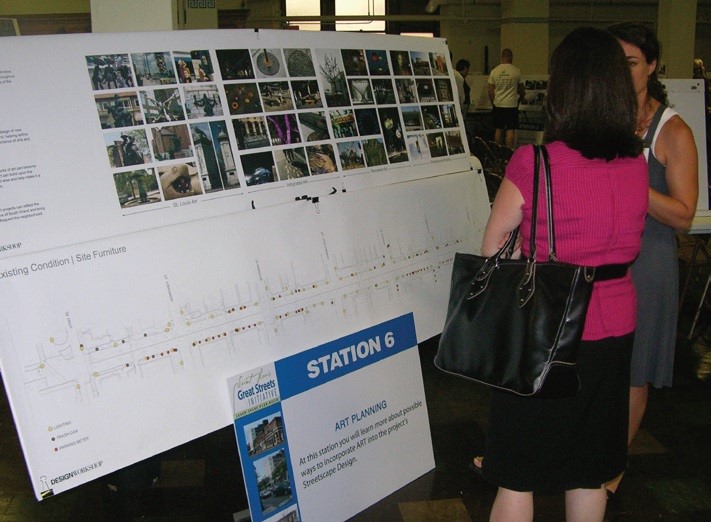
This article was written by Rachel Witt, Executive Director of the South Grand Community Improvement District. Read all the articles in Rachel’s Lessons & Partnerships in Community & Economic Development series.
Recently, I read an article that stated public engagement is pointless. I disagree! Public engagement is key to uniting communities and to building trust with local government. It’s not public engagement in general that is faulty, but how public engagement is structured that needs to be changed.
For instance, public engagement can be confusing and too textbook. Many residents are not experts on planning, design, zoning, or engineering. But local governments understand that public approval of a development impacts how the project can better serve the community and with increased participation, local governments will gain a higher rate of approval from the community for proposed developments.
To gain public input, local government must be multi-faceted when engaging with the community. Where the engagement takes place is one way to increase public participation. For example, public engagement can take place at the communities’ places of worship, daycare sites, community centers, or parks. Also, online surveys for those who are unable to attend in person are a great way to increase public participation. Many local governments have their meetings at their City Hall, which does not make it convenient or applicable for many to attend. Plus, many residents are unable to attend meetings in the afternoon, evening, or weekends. Multiple easy ways to foster public participation such as various times and days for the public to view the project, provided childcare, and refreshments will increase participation. Offering various incentives will grow the number of participants which will deliver not just a better project but set the path on how the community can participate in future projects.
Public charettes are workshops designed to increase public engagement for developing a design or vision for a project or planning activity. For instance, public charettes are far better organized and easier for the public to understand a proposed development. Conducting charettes as an open house, where staff are available to answer questions, provide diagrams, and gain input from residents, is the key for successful in public engagement. Then it is up to the developer of the project to work with business leaders, city officials, taxing district, quasi-government nonprofit organizations, and city departments to determine a few design options to propose to the community for additional feedback.
When complete, these concepts are then promoted at another public charette. Keep in mind residents are not experts, they need guidance on how to understand and answer the questions. I am not saying we are manipulating the public, but we need to provide them options to pick from that are realistic and attainable for their community. By keeping the community needs in mind the proposed development will be a success and a catalyst for future developments. The community must be at the table for the project to be a success.
After the first few public charettes, local government still needs to engage with their community. For example, projects are never ending; they should always be improving and/or making modifications. Whoever is in charge of design, oversight, and implementation must ensure a project will be doable, will last, and will work for the community it serves. Keeping the public informed with any such modifications is the key for projects to continue to be successful.
 Rachel Witt is the Executive Director of the South Grand Community Improvement District. Graduate from Southern Illinois University Edwardsville with a Bachelor of Science Degree in Geography, minor in Sociology and certification in Nonprofit Management. Master’s in public administration from Widener University emphasis in local government and economic development. Connect with Rachel on Linkedin or Email.
Rachel Witt is the Executive Director of the South Grand Community Improvement District. Graduate from Southern Illinois University Edwardsville with a Bachelor of Science Degree in Geography, minor in Sociology and certification in Nonprofit Management. Master’s in public administration from Widener University emphasis in local government and economic development. Connect with Rachel on Linkedin or Email.
